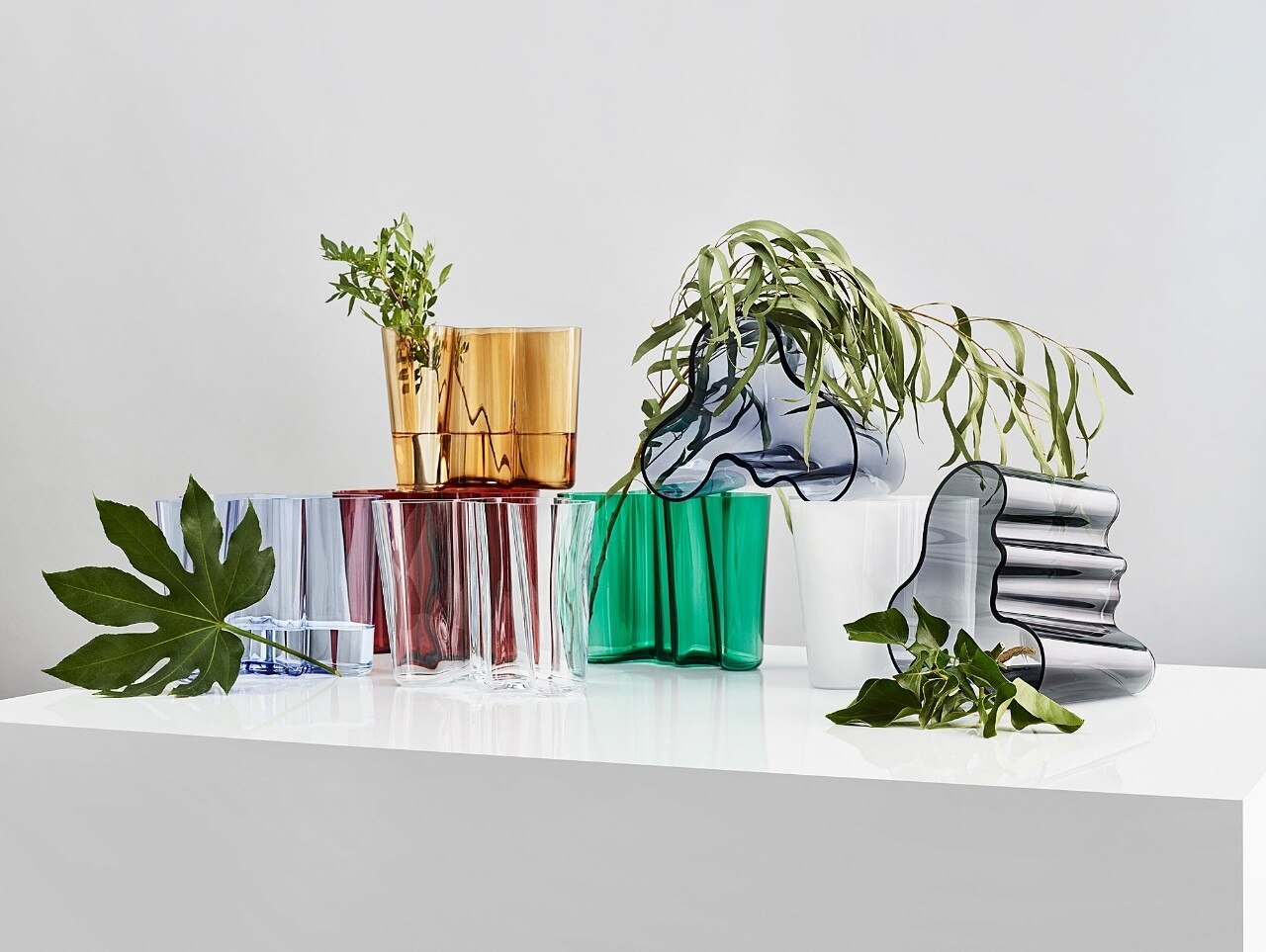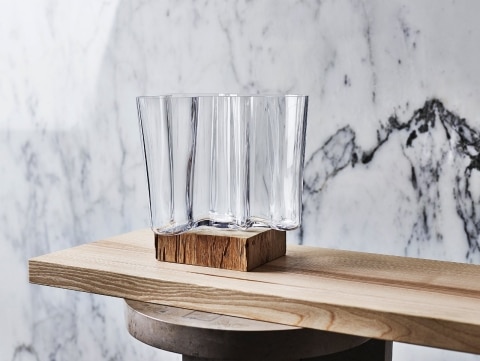Why Iittala's Aalto Vase is One of the World's Most Iconic Designs

An object that’s too beautiful to conceal beneath its purpose.
As a founding father of organic Modernism, Finnish architect and designer Alvar Aalto’s legacy is rich. Arguably it’s the fluid beauty of the Aalto vase that best reveals his fascination with the relationship between people and nature.
When in use, the undulating sides of the vessel prompt blooms to assemble loosely rather than bunching; they reach in all directions to be enjoyed from every angle. It’s this absence of structure and the amorphous form of the Aalto vase that make it a true original and lovely whether filled or empty.
The folds of an Eskimo woman’s leather trousers, a puddle and the shoreline of Finland’s fjords have all been offered as clues to the unique form of the piece Aalto submitted to the Karhula-Iittala glass design competition in 1936.
What’s less clear is whether Aalto’s first wife and collaborator, architect Aino Aalto (née Marsio), should share the credit. As documented in the 2020 film Aalto, Aino contributed to the interiors in the highly acclaimed human-centric functionalist buildings that made her husband Finland’s most famous architect. The couple’s bentwood experiments paved the way for revolutionary furniture designs by the Artek manufacturing company they co-founded in 1935 and, as freelance designers for local glassworks, both looked to nature and culture for inspiration. In 1937 the Aalto vase won first prize at the Paris World Fair and adorned each table at the Savoy, a luxury Helsinki restaurant with interiors designed by the Aaltos (the vase is often referred to as the Savoy).

Today, the mouth-blown vase is still produced in many colours and styles at the Iittala factory in Finland. It takes seven craftsmen 30 hours to make the original vase. Metal moulds replaced wooden ones and in 1957 it rose from 14 centimetres to 16 centimetres in height. The latest release, made from recycled waste glass from the factory, $359, brings Aalto’s reverence for nature back into the fold.
SEE ALSO: How R.M. Williams' The Craftsman Boot Became a Fashion Icon

Start planning now
Image credit: Timo Junttila


